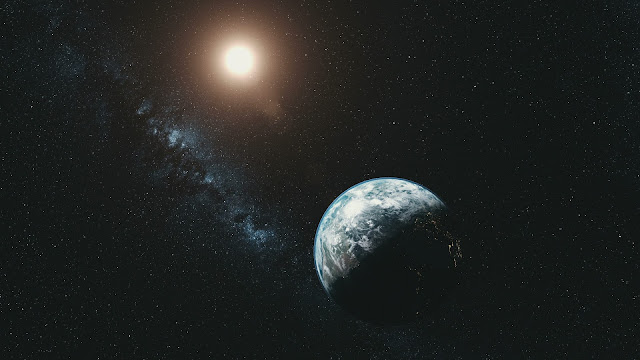Scientists have studied the path of our planet and the entire solar system through the Galaxy and come across a strange rhythm that repeats approximately every 200,000 million years.
In addition to spinning on its axis, our planet orbits the Sun and travels through the Milky Way galaxy, which itself is in motion. We travel across the Milky Way Galaxy as a giant cosmic family.
In addition to being huge and massive, our Milky Way galaxy is also in motion. It includes stars, planets, gas clouds, dust grains, black holes, dark matter, and more, all of which contribute to and are affected by its net gravity. The Sun rotates once every 220–250 million years from our perspective, some 25,000 light years from our galaxy’s center.
Everything is in motion.
Known as a spiral galaxy, the Milky Way Galaxy consists of four main spiral arms and many fragments of arms, known as spurs.
Everything within our galaxy, our solar system included, travels through space, traveling through these spiral arms.
So, how does this affect our planet, if at all?
To find out, geologists decided to look not into space but down into the Earth, observing tiny grains, hoping to understand how the planet was built and what processes might have contributed to its formation.
Asking a Geologist
The composition of mineral grains smaller than a human hair is observed by geologists. They then extrapolate the chemical processes they suggest to consider how the earth was formed.
Currently, scientists are connecting tiny grains to Earth’s place in the galaxy, bringing that minute attention to new heights. Their findings have been reported in a scientific paper published in Geology and titled “Did transit through the galactic spiral arms seed crust production on the early Earth?”
The goal of astrophysicists is to gain a better understanding of the universe and our place within it. Physicists develop models to describe astronomical object orbits using the laws of physics.
Despite what we might believe, the planet’s surface has undoubtedly been affected by its cosmic environment. A meteorite impact, periodic changes in Earth’s orbit, variations in the sun’s output, and gamma-ray bursts are all part of this process.
Recently, meteorite impacts have been linked with the formation of continental crust on Earth, forming buoyant “seeds” in the outermost layer of our planet.
A rhythm
Researchers have now identified a rhythm in the production of this early continental crust that suggests a powerful driving force.
Magma, a molten or semi-molten material, is responsible for the formation of many rocks on Earth. In addition to magma being generated by the mantle—the solid, slowly flowing layer beneath our planet’s crust—older bits of preexisting crust can also be re-heated to form magma. Solid rock is formed as liquid magma cools.
Mineral grains grow during this cooling process of magma crystallization and can trap decaying elements such as uranium, producing a sort of stopwatch that records the age of the minerals.
In addition to trapping other elements, crystals can also record the composition of their parental magma.
This information, combined with crust composition, allows scientists to reconstruct a timeline of crust production.
By using the Fourier transform, they can decode the main frequencies of the signal.
Based on this approach, crust production on the early Earth had an approximate rhythm of 200 million years.
An even stranger rhythm
A similar rhythm is also found elsewhere. The Milky Way galaxy and our solar system spin around the supermassive black hole at its center, but at different speeds.
As our solar system races around the galaxy’s arms, the spiral arms orbit at 210 kilometers per second while the sun speeds along at 240, meaning our solar system is riding along the spiral arms.
Based on this model, our solar system enters a spiral arm of the galaxy approximately every 200 million years.
A possible connection exists between the time it takes to orbit the spiral arms of the galaxy and the timing of crust production on Earth – but why?
The Oort cloud is thought to orbit our sun in the far reaches of our solar system.
It is suggested that as the solar system moves into spiral arms periodically, the interaction between it and the Oort cloud may dislodge material from the cloud, bringing it closer to the inner solar system. There is even a possibility that some of this material will strike the Earth.
Scientists believe that these periodic high-energy impacts can be tracked by the tiny mineral grains that preserve the record of crust production. Impacts from comets excavate large volumes of the Earth’s surface, causing the mantle to melt due to the decompression.
As it is enriched in light elements such as silicon, aluminum, sodium, and potassium, it floats on top of the denser mantle. Continental crust can be generated in a variety of ways, but impacting our early planet is likely to have formed buoyant seeds of crust. Those early seeds would be adhered to by magma produced by later geological processes.
